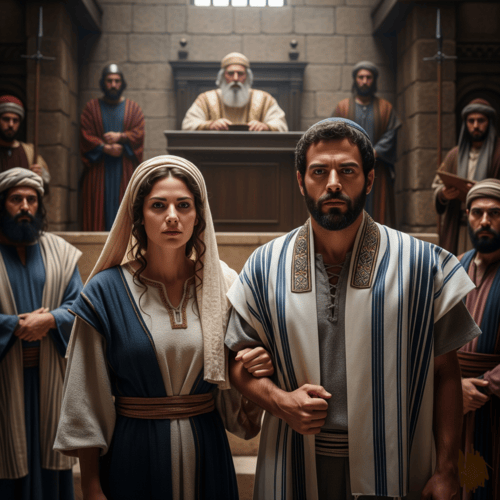Dead Sea Scrolls: How Ancient Texts Confirm Bible Integrity
Discovery and Excavation
The Dead Sea Scrolls—among the most significant archaeological finds of the 20th century—were discovered between 1947 and 1956 in the Qumran Caves near the Dead Sea, on the West Bank. The initial discovery was made by a Bedouin shepherd, Muhammed edh-Dhib, who stumbled upon the first of the scrolls while searching for a lost goat. The accidental find led to a series of excavations that uncovered a treasure trove of ancient manuscripts.
Contents of the Scrolls The scrolls are a collection of around 981 different texts, including:
- Biblical Manuscripts: Approximately 40% of the scrolls are texts from the Hebrew Bible (Old Testament). These include fragments from all books except the Book of Esther, with particularly significant copies of Isaiah, Psalms, and Deuteronomy.
- Apocryphal and Pseudepigraphal Texts: About 30% of the scrolls consist of texts not included in the canonical Hebrew Bible but considered important in understanding Jewish traditions and beliefs of the period. These include the Book of Enoch, the Book of Jubilees, and the Testament of Levi.
- Sectarian Manuscripts: The remaining 30% of the scrolls are unique to the Jewish sect that inhabited Qumran, believed by many scholars to be the Essenes. These writings include the Community Rule (a manual for communal living), the War Scroll (describing an apocalyptic battle), and the Thanksgiving Hymns (poetic psalms of thanksgiving).
Importance and Impact
The Dead Sea Scrolls are critical for several reasons:
- Textual Integrity: The scrolls provide the oldest known copies of the Hebrew Bible, dating from the 3rd century BCE to the 1st century CE. This is almost 1,000 years older than the previously known oldest manuscripts, the Masoretic Texts from the 10th century CE. Comparing these ancient texts with later versions has shown remarkable consistency, bolstering the argument for the textual reliability of the Bible.
- Historical Insight: The scrolls offer a rare glimpse into Jewish life and beliefs during the Second Temple period (516 BC –70 CE). They illuminate the diversity of religious thought and practice at the time, including the beliefs of groups such as the Essenes, who lived in relative isolation.
- Linguistic Value: The scrolls are invaluable for studying the development of the Hebrew language, as well as Aramaic and Greek. They help linguists understand the evolution of these languages and their usage in different contexts.
The Dead Sea Scrolls and Bible Reliability
The Dead Sea Scrolls are often cited as evidence for the reliability of the Bible. Consider the following reasons:
- Consistency of Text: The remarkable similarity between the scrolls’ biblical texts and the Masoretic Texts used today demonstrates that the Bible has been transmitted accurately over the centuries. For instance, the Great Isaiah Scroll, found in Cave 1, is almost identical to the Masoretic Text, except for minor variations in spelling and grammar.
- Confirmation of Historical Events: Some scrolls contain references to historical events and figures that align with known history from other sources, supporting the historical accuracy of biblical accounts.
- Apocryphal Insights: The presence of non-canonical books among the scrolls provides context for understanding the religious and cultural environment in which the Bible was written and compiled. These texts help to fill gaps in our knowledge about Jewish beliefs and practices during the Second Temple period.
Conclusion
The Dead Sea Scrolls are a monumental discovery that has reshaped our understanding of ancient Jewish history, religion, and the transmission of biblical texts. Their preservation and detailed study continue to offer new insights and affirm the reliability of the Bible, making them an invaluable resource for scholars and believers alike. The scrolls not only validate historical and textual accuracy but also enrich our appreciation for the cultural and religious milieu of the ancient world.
Related FAQs
- How old are these Dead Sea Scrolls? The Dead Sea Scrolls date from the 3rd century BCE to the 1st century CE. This makes them approximately 2,000 to 2,300 years old.
- What is the Copper Scroll that was discovered among the other scrolls? Among the scrolls is the unique Copper Scroll, a list of 64 locations where gold and silver treasures are supposedly hidden. Unlike the other scrolls, it was engraved on copper sheets, and has sparked the imaginations of treasure hunters and historians.
- What material have the Dead Sea Scrolls been written on? Most of the scrolls are written on parchment made from animal skins, while a few are on papyrus. The quality of these materials and the ink used have contributed to their preservation over millennia.
- What, if anything, do the Scrolls tell us about the Essenes’ scribal practices? The scrolls provide evidence of ancient scribal practices, including the use of Paleo-Hebrew script, corrections made by later scribes, and techniques for organizing and storing scrolls.
- What have excavations revealed to us about the community at Qumran? Archaeological excavations at Qumran have revealed the ruins of a monastic-like community, complete with communal dining rooms, ritual baths (mikva’ot), and scriptoriums where the scrolls were likely copied and stored.
- Where can I see the Dead Sea Scrolls today? Many of the Dead Sea Scrolls are housed in the Shrine of the Book at the Israel Museum in Jerusalem. Digital versions are available online through the Israel Museum’s Digital Dead Sea Scrolls project and the Leon Levy Dead Sea Scrolls Digital Library. To view digital versions of the Dead Sea Scrolls, visit:
Related Reads:
Editor's Pick

Should We Stop Using Male Pronouns for God? Why Do We Say No?
A friend of ours arrived eagerly at his first theology class in seminary. But he quickly discovered something troubling: the [...]

Did Old Testament Law Force Women to Marry their Rapists?
**Editor’s Note: This post is part of our series, ‘Satan’s Lies: Common Deceptions in the Church Today’… Viral misinformation abounds [...]

From Danvers To Nashville: Two Statements, One Biblical Vision
30 years separate the Danvers Statement on Biblical Manhood and Womanhood (1987) and the Nashville Statement on Human Sexuality (2017). [...]

The Nashville Statement: Why Affirm It Despite Media Backlash?
WHY DO REFORMED CHRISTIANS STAND BY THIS STATEMENT ON MARRIAGE AND GENDER? When the Nashville Statement was released in 2017, [...]

Who Is Belial? Solving The 2 Corinthians 6:15 Mystery
Belial: This name from the pages of Scripture chills the soul. Who is this mysterious figure Paul invokes in 2 [...]

Celibacy Or Castration: What Jesus Really Means in Matthew 19:12
One of Scripture's most shocking misinterpretations led theologian Origen to castrate himself in the third century. His tragic mistake? Taking [...]

Philippians 4:13: Did Paul Really Mean We Can Do ALL Things?
"I can do all things through Christ who strengthens me." It's on gym walls, graduation cards, and motivational posters everywhere. [...]

The Ordinary Means of Grace: Why Are They Indispensable?
ORDINARY MEANS FOR EXTRAORDINARY TRANSFORMATION What if God's most powerful work in believers' lives happens through the most ordinary activities? [...]

Is the Bible God’s Word? Or Does It Only Contain God’s Word?
The authority of Scripture stands at the crossroads of modern Christianity. While some argue the Bible merely contains God’s Word [...]

Will We Remember This Life in Heaven? What Isaiah 65:17 Means
"Will I remember my spouse in heaven? My children? Will the joy we shared on earth matter in eternity?" These [...]
SUPPORT US:
Feel the Holy Spirit's gentle nudge to partner with us?
Donate Online:
Account Name: TRUTHS TO DIE FOR FOUNDATION
Account Number: 10243565459
Bank IFSC: IDFB0043391
Bank Name: IDFC FIRST BANK






